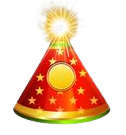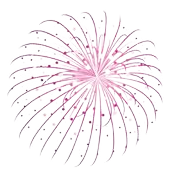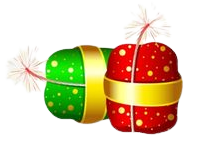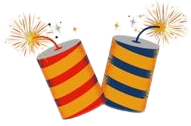The bang, glimmer, shimmer, and shades of fireworks generally come from explicit minerals, which come from across the country and the remainder of the world.
Blasts:
black powder – the blasts in many fireworks actually utilize customary explosive, made out of potassium nitrate (saltpetre), sulphur, and charcoal. Potassium is generally imported from Canada; however, some is mined in New Mexico and Utah. Most homegrown sulphur creation comes from Louisiana and Texas, where it is extricated from oil and regular gas; the sulphur gives fireworks their trademark smell.
Glimmers and bangs:
aluminium powder – 28% of U.S. aluminium utilization comes from reusing disposed of aluminium items. The U.S. imports a lot of both aluminium and aluminium metal (bauxite) from numerous nations all over the planet. Canada gives generally 50% of aluminium imports; Jamaica gives generally 50% of imported aluminium ore.
Flashes:
iron filings – 98% of the iron mineral mined in the US comes from Michigan and Minnesota. Reusing is likewise a significant wellspring of iron and steel.Experts believe fireworks were invented in China over 1,000 years ago. Today, China is still the largest maker of fireworks in the world. Fireworks may seem like pure magic. But they’re actually pure science. All those different shapes and colours come about as a result of careful planning.
Most people are familiar with two basic types of fireworks:
- firecrackers and sparklers. The science behind these two fireworks forms the basis for all other fireworks. Yes, even those spectacular fireworks display you see in the sky (called aerial fireworks).
- Firecrackers are rolled paper tubes filled with black powder (also called gunpowder). They might also be filled with flash paper and a fuse. When you light the fuse of a firecracker, the fire burns along the fuse. Eventually, it reaches the powder. When it does, the firecracker explodes.
- Sparklers are different. There’s no explosion. Instead, sparklers make bright, sparkly light for about a minute. The bright sparks you see are usually burning bits of dust. That dust is made of metals, such as aluminium, iron, steel, zinc, or magnesium.
- Aerial fireworks are usually made as a shell that has four parts. The container consists of pasted paper. The fuse allows the shell to reach the desired altitude before exploding. A bursting charge made of black powder (like a firecracker) is at the centre of the shell. Stars (sparkler-like substances shaped into small spheres) are mixed throughout the inside of the shell.
- These shells are usually launched into the sky from short pipes filled with a lifting charge of black powder. The lifting charge also lights the shell’s fuse, which burns as the shell rises into the sky. When the flame along the fuse hits the bursting charge inside the shell, the shell explodes. That’s when the magic begins.
- The explosion ignites the stars. The stars burn to produce the bright sparks of light we see in the sky. The explosion pushes the stars in all directions, which creates beautiful displays.
- Have you ever seen fireworks that seem to explode in different stages? Those fireworks use special “multi-break” shells. You can think of them as shells within shells that are made to explode at different times.
- Not all fireworks look the same. Some explode in a circle. Others look like a shower of sparks falling down toward the earth. A firework’s pattern depends on how the stars are arranged in the shell. Manufacturers can create an outline of a specific pattern with stars. Then, they surround those stars with a special charge. That charge will separate them all at the same time from the shell.
Colours:
The accompanying tones each come overwhelmingly from various mixtures of a solitary component. Normal mixtures are nitrates, carbonates, chlorides, chlorates, and oxalates.
Red:
strontium – most strontium comes from the mineral celestite. The mines no strontium metal, depending on imports for 100 percent of its stockpile
Blue:
copper – bunches of copper mineral is mined in the US, 66% of which comes from Arizona, trailed by Utah, New Mexico, Nevada, Montana, Michigan, and Missouri.
Green: barium – most barium comes from the mineral barite. The US imports 84% of the barite it utilizes, for the most part from China.
Yellow:
sodium – sodium nitrate gives an especially radiant yellow fire. Most sodium nitrate comes from the Atacama Desert in Chile and Peru, yet it is additionally orchestrated mechanically from other sodium compounds.
Different varieties are generally delivered from combinations of mixtures:
Orange = strontium + sodium (some calcium mixtures can likewise create orange tones)
Purple = strontium + copper
Silver-white = titanium, zirconium, and magnesium amalgams
It takes just as much science to create the beautiful colours we enjoy watching during fireworks shows. Most colours are produced by carefully mixing chemical compounds. Certain compounds make particular colours when they burn. For example, most yellow fireworks include a sodium compound.










